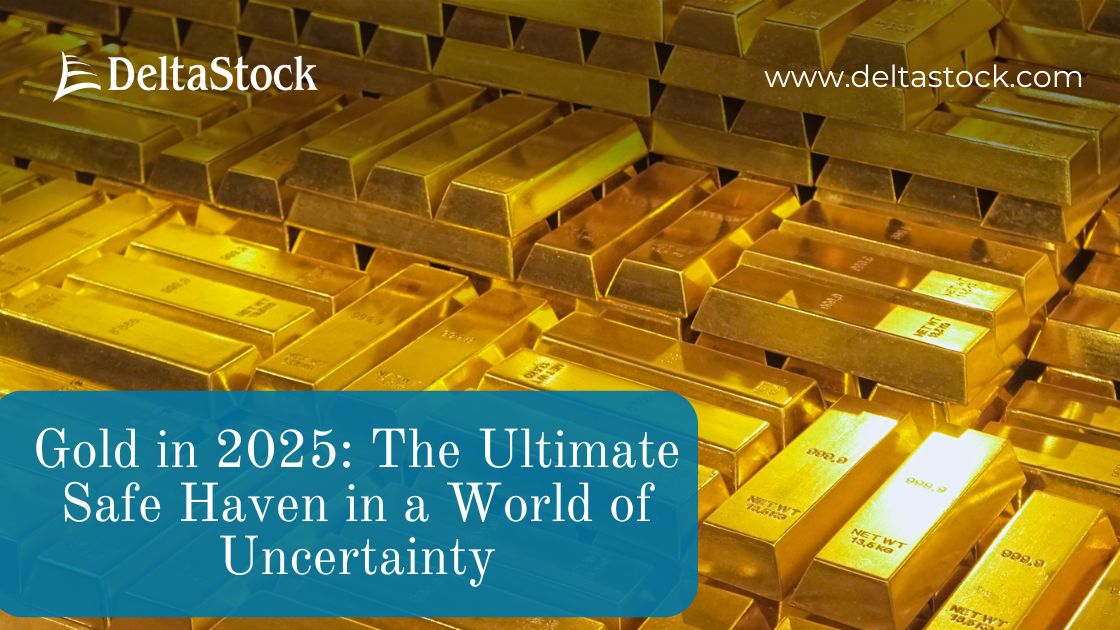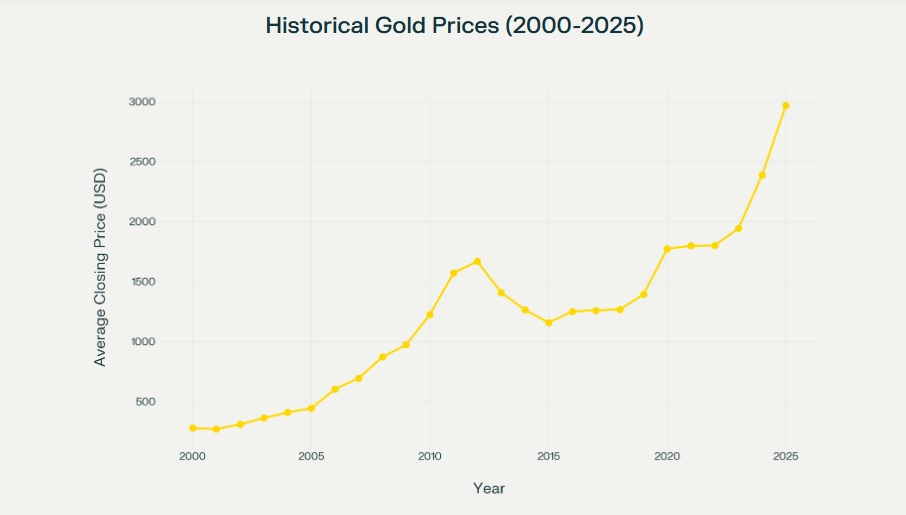
Gold as a Safe Haven Asset
Gold has long been regarded as a safe haven for investors, especially during periods of economic uncertainty, high inflation, or geopolitical tension. Its intrinsic value, global liquidity, and historical role as a store of wealth make it a preferred asset when traditional markets become volatile.
Research shows that gold often outperforms government bonds—another classic safe haven—during times of crisis, though it may not match the long-term returns of equities.
Gold Price Movement in 2025
Since the start of 2025, gold prices have experienced a dramatic surge. On January 1, 2025, gold was priced at $2,623 per ounce. By early May, gold had climbed to $3,237.68 per ounce, marking a 22% gain so far this year.
The average closing price has approached $3,000, as shown in the historical price chart, with a steep acceleration since late 2024. This uptrend has pushed gold to new all-time highs, reflecting robust investor demand.
Key drivers of this rally include:
- Exceptional central bank demand, now estimated at 80 metric tons per month.
- Increased inflows into gold ETFs, with investors seeking safety from recession risks and persistent inflation.
- Supportive macroeconomic conditions, such as declining real interest rates.
Major Investment Bank Forecasts
Leading investment banks remain bullish on gold’s outlook:
| Bank | End-2025 Forecast (USD/oz) | Key Drivers |
|---|---|---|
| Goldman Sachs | $3,700 (range $3,650–$3,950) | Central bank demand, ETF inflows, recession risk |
| UBS | $3,200 (Q3 2025) | Dollar weakness, soft-landing scenario, geopolitics |
| Citi | $2,900 (2025 average) | Upgraded from $2,800, macro uncertainty |
| JPMorgan | $2,900–$3,200 (2025 range) | Portfolio demand, limited mine supply |
“If a recession occurs, ETF inflows could accelerate further and lift gold prices to $3,880 per troy ounce by year-end… In a high-risk scenario, gold might hit $4,500/oz by the end of 2025” — Goldman Sachs
Goldman Sachs further projects that if a global recession materializes, gold could spike as high as $3,880 per ounce by year-end. Their base case assumes continued robust central bank buying (estimated at 80 metric tons per month) and persistent geopolitical tensions.
Trading Economics forecasts gold to reach around $3,425 per ounce within the next 12 months.
Historical Context and Forecast
The chart demonstrates that gold has undergone several cycles of rapid appreciation, often following periods of financial instability or heightened uncertainty. After a plateau from 2012 to 2018, prices began rising again, with the most recent surge starting in 2024 and accelerating sharply in 2025.
Given the current momentum, historical patterns, and the structural drivers cited by analysts—especially central bank accumulation and a supportive macro environment—it is reasonable to expect gold prices to remain elevated or rise further.

Forecast:
Assuming central banks maintain their current pace of buying and global economic uncertainty persists, gold is likely to trade between $3,500 and $3,800 per ounce by the end of 2025. If a major recession or geopolitical shock occurs, a spike toward $4,000 is plausible, in line with Goldman Sachs’ upper estimates.
Gold’s role as a safe haven is being reinforced by current global trends. With central banks leading demand and investors seeking protection from inflation and market volatility, gold’s strategic importance in diversified portfolios remains strong.
The outlook for 2025 and beyond is bullish, with most major forecasts anticipating further gains and the possibility of new record highs.
These materials are for information purposes only. They do not post a buy or sell recommendation for any of the financial instruments herein analysed.
Deltastock AD assumes no responsibility for errors, inaccuracies or omissions in these materials, nor shall it be liable for damages arising out of any person’s reliance upon the information on this page.
59% of retail investor accounts lose money when trading CFDs with this provider.